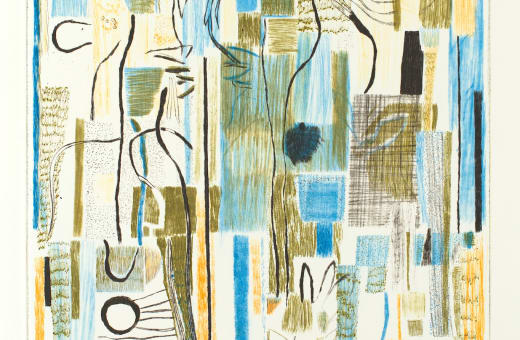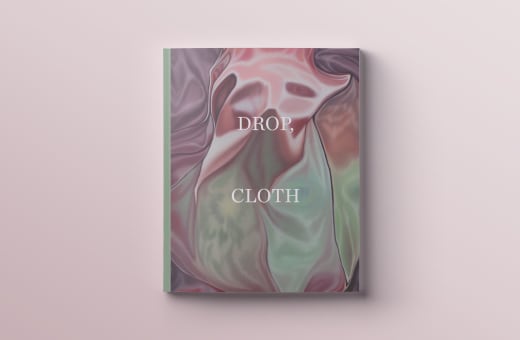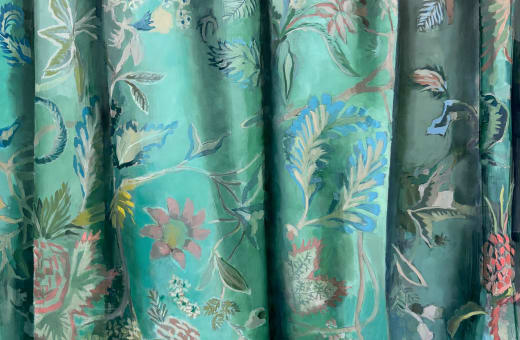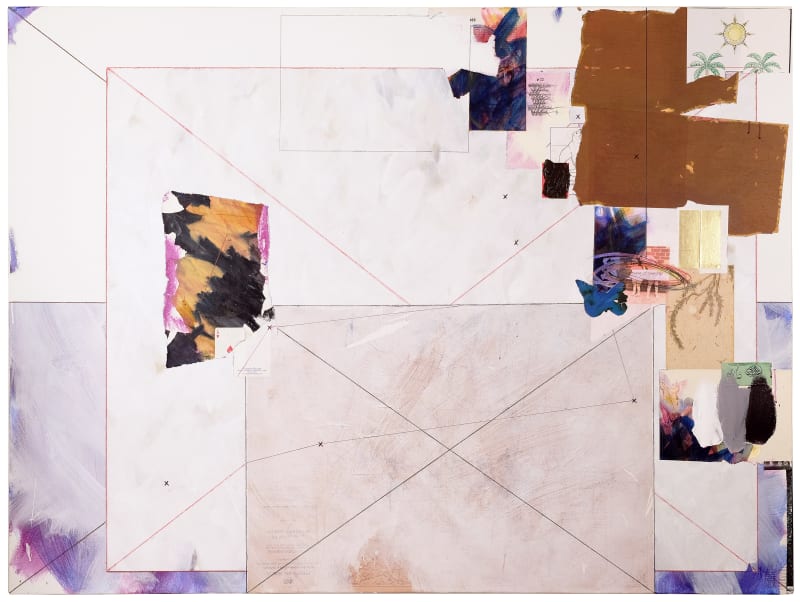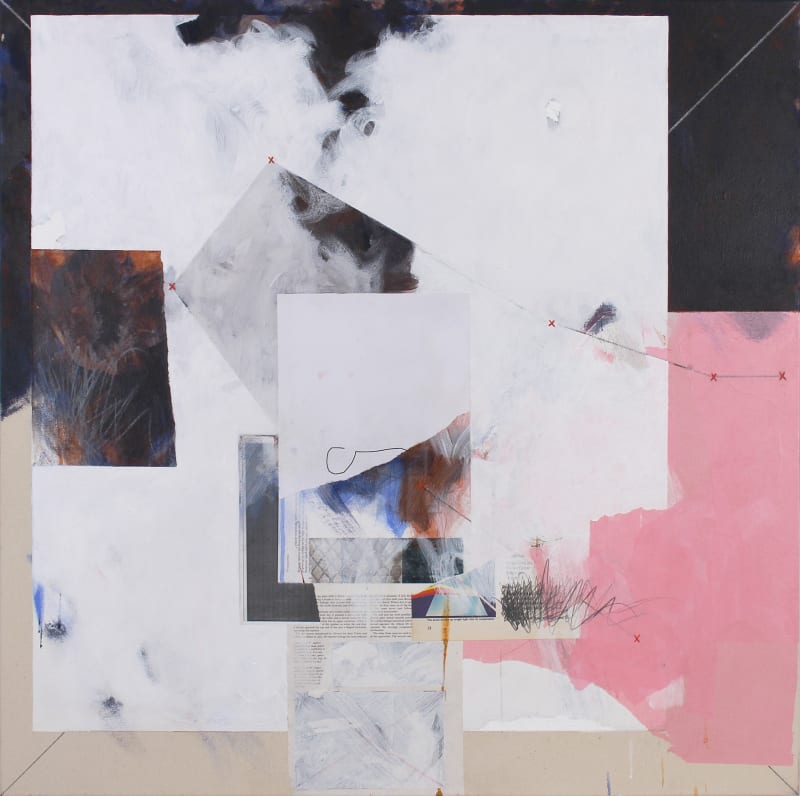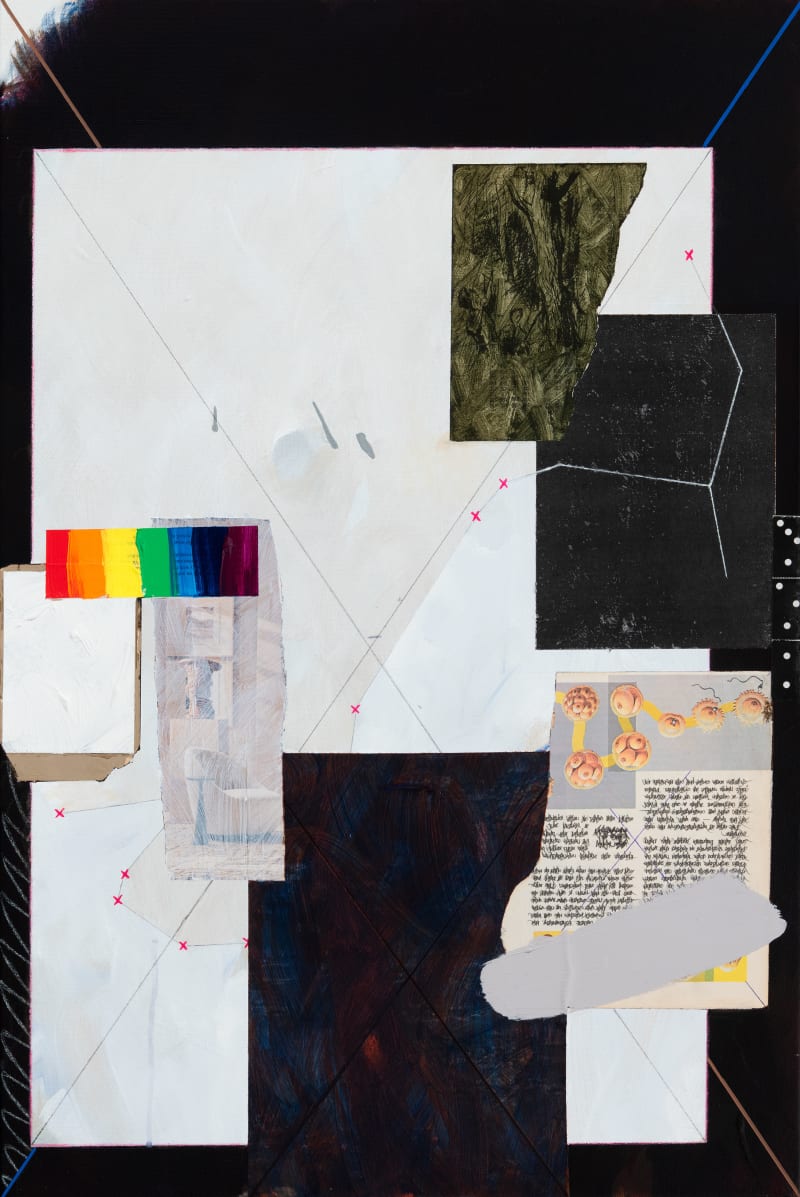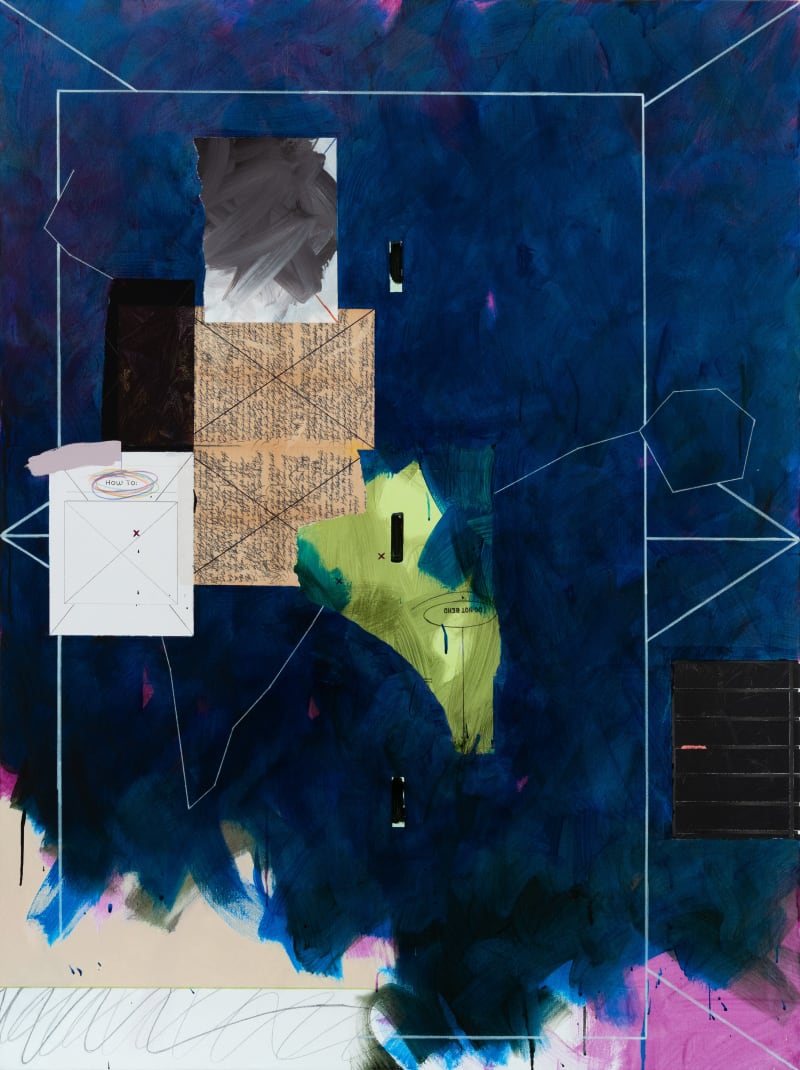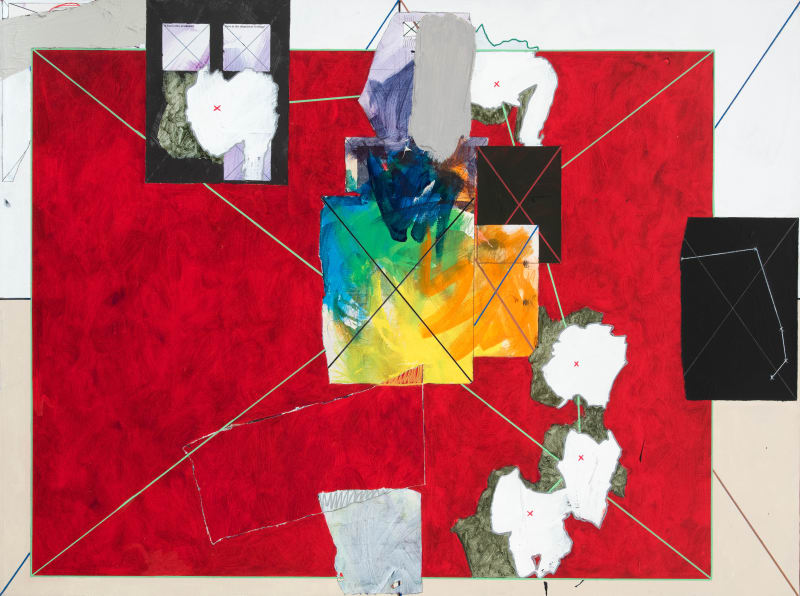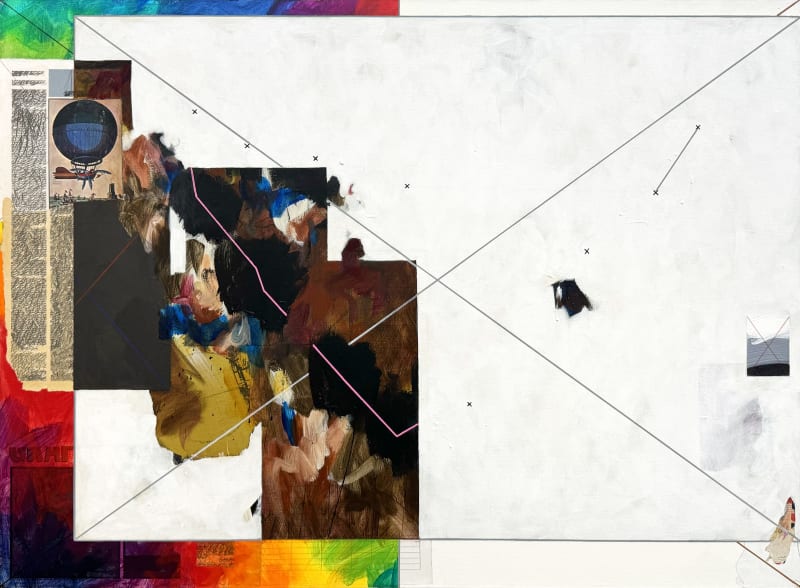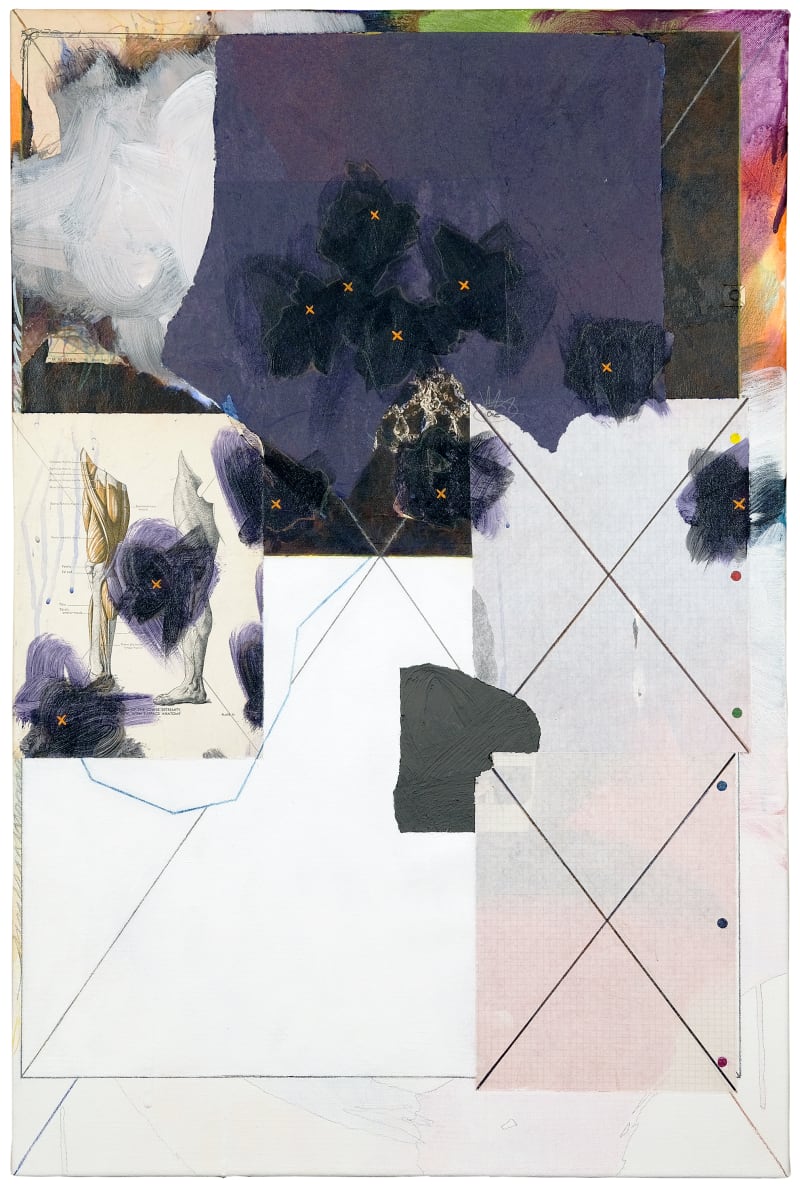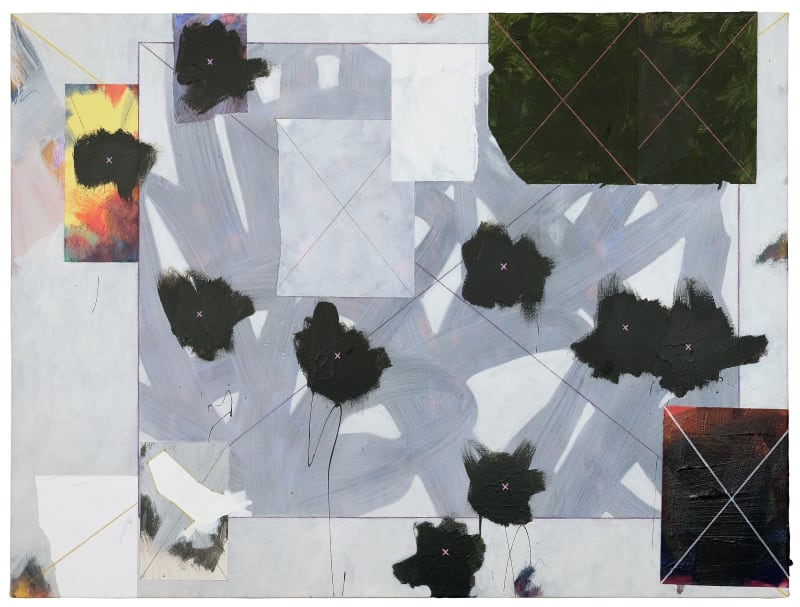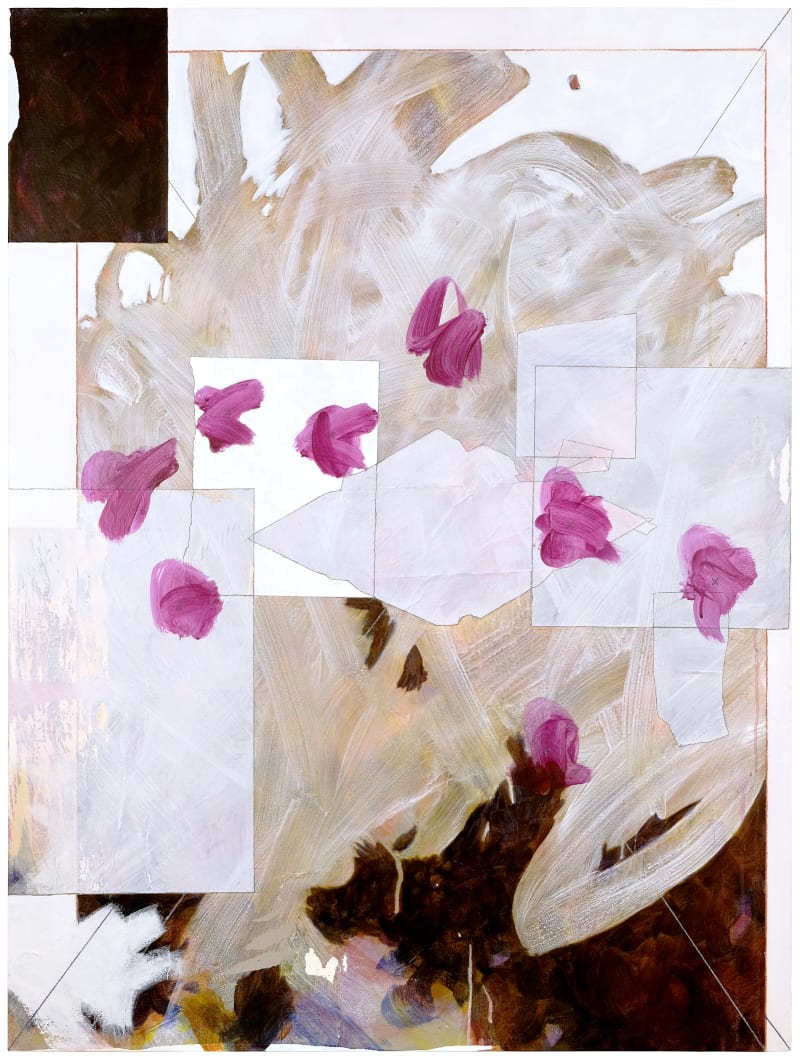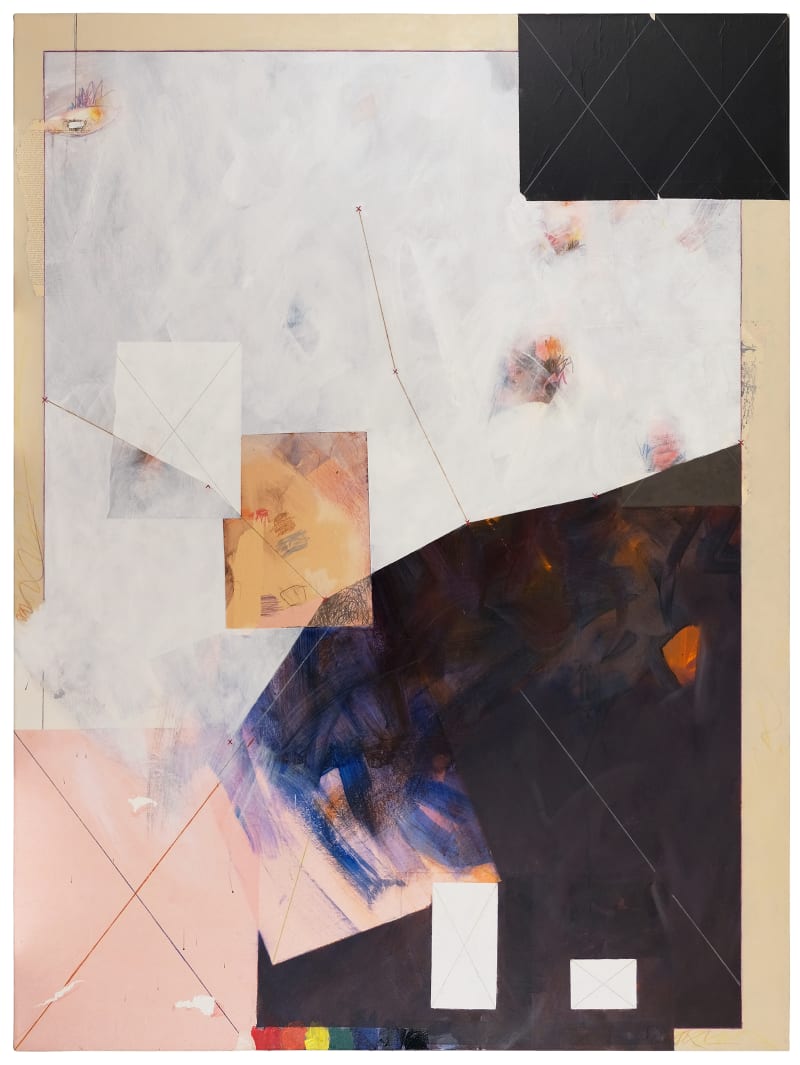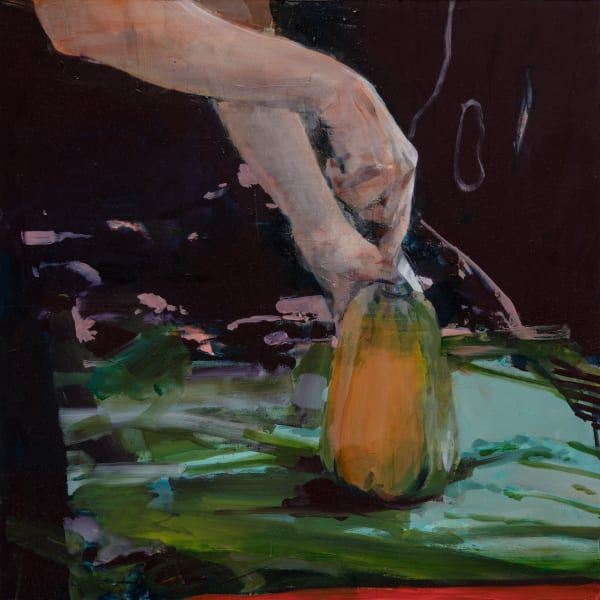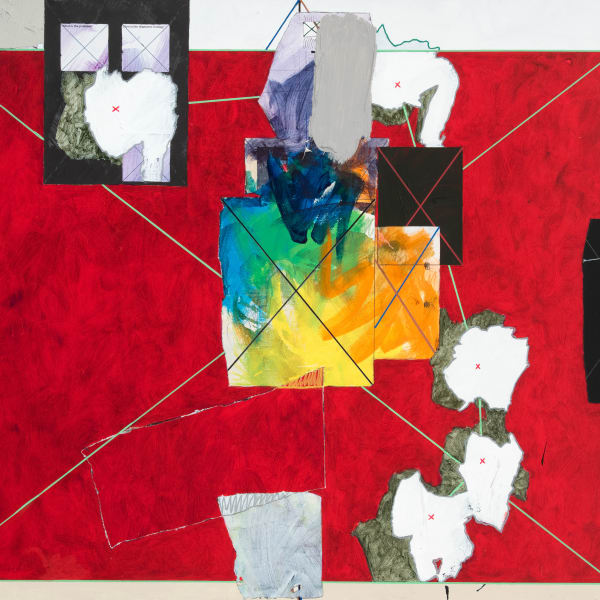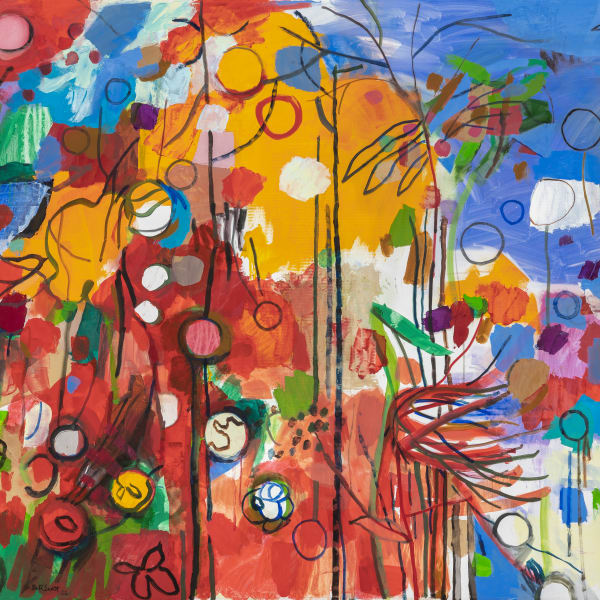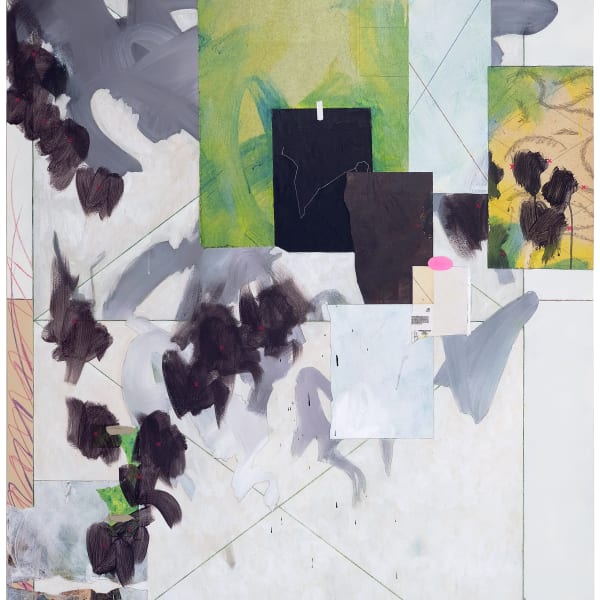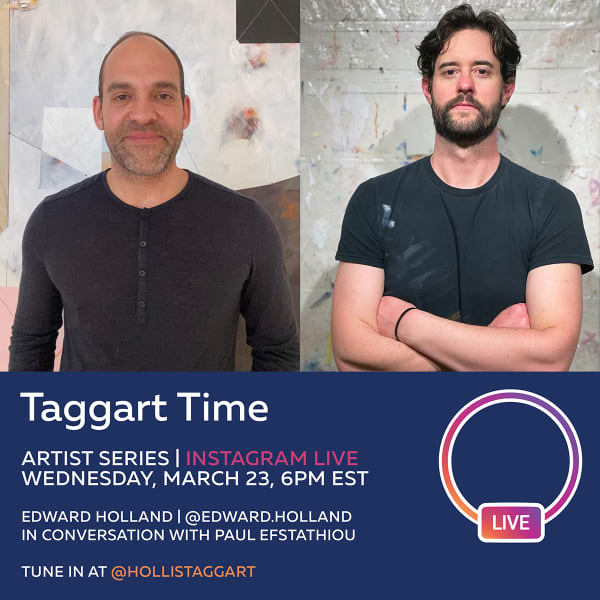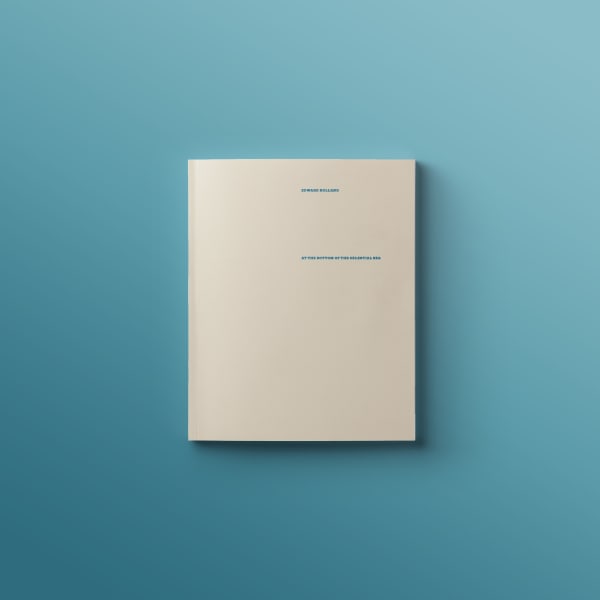
For Holland, zodiac constellations—like art itself—represent an ancient way of storytelling and communicating universal myths about human nature and the world.
Edward Holland’s works bring to life the full potential of collage as an aesthetic and conceptual device. Often combining mixed media such as oil paint, acrylic, graphite, and printed papers, his compositions are scaffolded by the linear geometry of zodiac constellations that provide a basic framework for each painting. Holland builds on this foundation with brushstrokes and collage, negotiating various elements on the picture plane to create unexpectedly moving juxtapositions.
For Holland, zodiac constellations––like art itself––represent an ancient way of storytelling and communicating universal myths about human nature and the world. His poetic works, reminiscent of Robert Rauschenberg’s North African collages that also incorporate printed papers and maintain geometric structures, speak to Holland’s keen ability to bring together disparate elements into surprising and fresh configurations.
Edward Holland’s works bring to life the full potential of collage as an aesthetic and conceptual device. Often combining mixed media such as oil paint, acrylic, graphite, and printed papers, his compositions are scaffolded by the linear geometry of zodiac constellations that provide a basic framework for each painting. Holland builds on this foundation with brushstrokes and collage, negotiating various elements on the picture plane to create unexpectedly moving juxtapositions.
For Holland, zodiac constellations––like art itself––represent an ancient way of storytelling and communicating universal myths about human nature and the world. His poetic works, reminiscent of Robert Rauschenberg’s North African collages that also incorporate printed papers and maintain geometric structures, speak to Holland’s keen ability to bring together disparate elements into surprising and fresh configurations.
Influenced by the works of Édouard Manet, Joan Mitchell, Jasper Johns, and Sigmar Polke, among others, Holland sees the process of building his compositions as a continual, intuitive dance. He mobilizes collage as a means of adding layers of content and imagery, and in the spirit of Hans Hofmann’s “push-pull” method, works to activate and organize the space of the collage by seeing what needs to come forward and what needs to be de-emphasized or pushed back into space. Always sourcing materials for his collages serendipitously, Holland allows collage materials to enter his life any which way, including materials sent by people he knows, materials he finds, or books on the street. The concrete materiality of collage fragments in his works are often marshaled in opposition to abstraction, which take the form of painterly strokes, soft washes, or untethered masses of color. Placing opposites in his work, whether formally or conceptually, reinforces the inherently paradoxical nature of painting itself as a flat object that depicts and conjures dimensional space.
Holland was born in Philadelphia in 1980. He received a B.F.A. in painting from Syracuse University and M.A. in studio art from New York University. His work has been shown in galleries nationwide, including Causey Contemporary, New York; Gallery 543 at URBN, Philadelphia; Long-Sharp Gallery, Indianapolis; MM Fine Art, Southampton, New York; and Gerald Peters Gallery, New York, and Santa Fe. His work has been discussed in ArtZealous, Huffington Post and Eyes Towards the Dove, among others. He lives and works in New York City.


